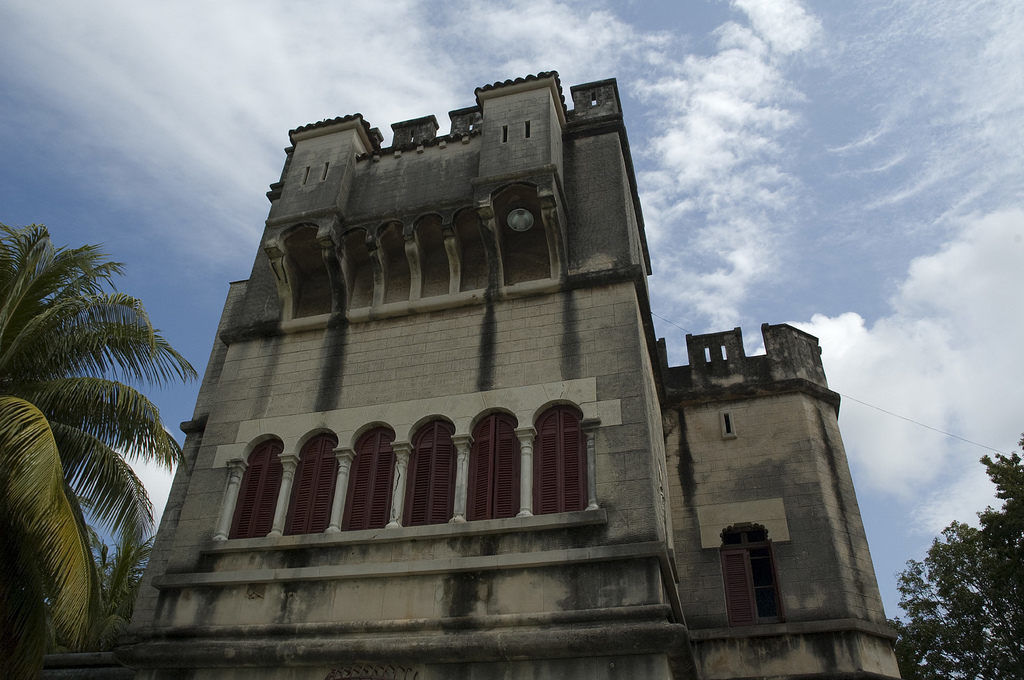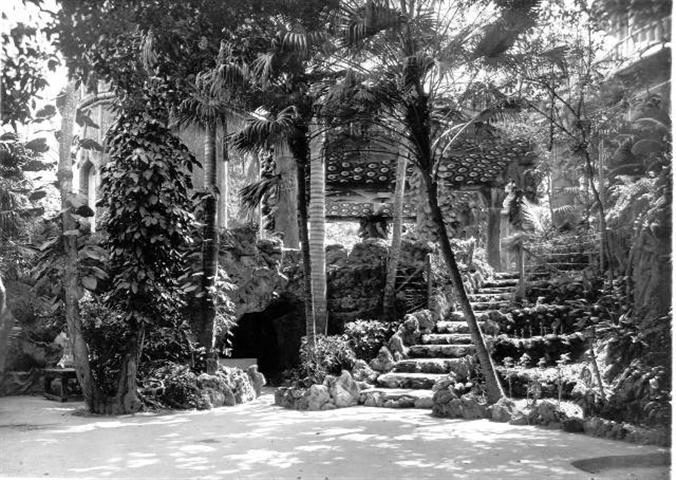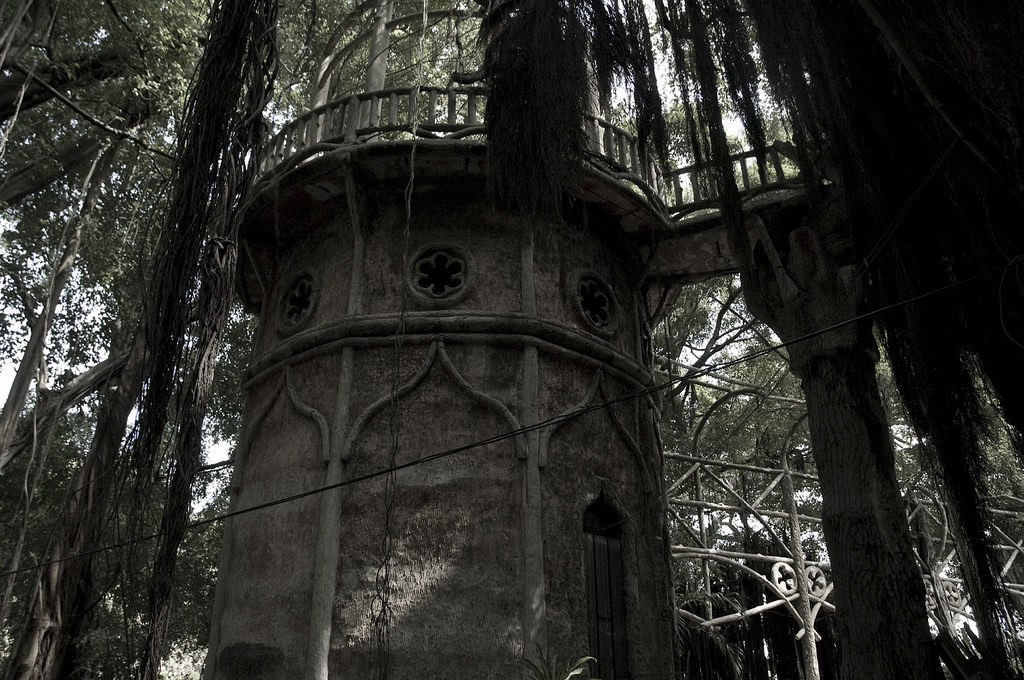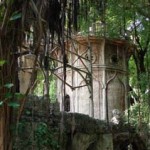 BRIEF HISTORY OF “THE GARDENS OF THE TROPICAL”, HAVANA FORGOTTEN WORLD.
BRIEF HISTORY OF “THE GARDENS OF THE TROPICAL”, HAVANA FORGOTTEN WORLD.
Perhaps the most effective commercial strategy of the first half of the twentieth century was the construction of the Jardines de La Tropical, fruits of an extraordinary Spanish-Cuban industry that stimulated factory development in Cuba with its commitment and sound economic policy, so which reached great excellence, inside and outside of Cuba, with its products and services. This is what the historian Yaneli Leal of the Eye of the Cross affirms in her excellent work Los Jardines de La Tropical, which also provides valuable information that highlights the importance and scope of the Gardens within Cuban culture. Its conception and development is due to the Blanco Herrera family, owner and main shareholder of La Tropical.
Thus, Cosme Blanco Herrera, then president of the company, bought La Tropical, former property of Andrés Fernández, which expanded and modernized, inaugurating it in 1897 and producing a beer of excellent quality. At the beginning of the 20th century, it also acquired the Havana Brewery, for which the Tivoli brand began to be produced and commercialized as the second most important brand of the New Ice Factory S.A. Well positioned as the first and largest industry of its kind in Cuba, the Nueva Fábrica de Hielo SA, came to belong to the most prestigious industrial organizations in the country, was awarded in several international exhibitions and became the main source of employment for hundreds of workers , in addition, well remunerated and with their own association: in 1917 the Society of Employees of the New Factory of Ice was created. In Palatino No. 7, the Cosme Blanco Herrera School was founded on the initiative of the owners of the factory for their children and their employees.
PALACETE AND GARDENS
The Gardens of the Tropical have for additional charm a small palace that remembers the Nasrid buildings of the Alhambra of Granada, in Spain; scenario created by the La Tropical beer factory in 1912, according to some data, others say in 1904.
The Havana market of that time in search of cold drinks of maximum quality asked to counteract the tropical climate with liquids of its taste and this is how La Tropical emerged.
Its gardens are located on the east bank of the Almendares River, the longest one that crosses the capital city and is 48.8 kilometers long. This recreational complex has interesting architectural objects integrated into the exuberant natural landscape that is still preserved in very good condition. On a terrace above the area was built a neo-Arab style castle with interior decorations and a profuse ornamentation on roofs and capitals in the style of the pavilions of the Alhambra in Granada.
In its external source the water gushed, in its original times, as well as being completed with an eclectic façade, which reminds us of a medieval castle.
During the 90s of the last century this park had a repair and the castle was adapted to restaurant, but then, the economic difficulties made the oblivion.
During the 90s of the last century this park had a repair and the castle was adapted to restaurant, but then, the economic difficulties made the oblivion. Despite this peculiarity of time and the lack of love of many humans for nature, even Los Jardines retains a very special raw charm that can be exploited.
In its good times -yet it retains many details-, the set possessed grottos, labyrinths, waterfalls, arbors, cafeterias and a spacious ballroom with a capacity for 500 couples.
The place is accessed by Avenida 51, in the neighborhood of Marianao, near an area called Puentes Grandes. Also, and should not be confused, there is the Pink Room of La Tropical, which is a space for dancers, as it always was, on Avenida 41.
Finally, it can be said that Los Jardines is now part of the Metropolitan Park of Havana and there are plans to rescue it and recover it as an ecological zone of the Almendares River. Meanwhile, it has many values, an indisputable beauty, the privacy of these places and the possibility of allowing professional or amateur photographers to portray nature and enjoy structures intelligently integrated into the landscape.
 BREVE HISTORIA DE “LOS JARDINES DE LA TROPICAL”, UN MUNDO OLVIDADO DE LA HABANA.
BREVE HISTORIA DE “LOS JARDINES DE LA TROPICAL”, UN MUNDO OLVIDADO DE LA HABANA.
Quizás la estrategia comercial más efectiva de la primera mitad del siglo XX, fue la construcción de los Jardines de La Tropical, frutos de una extraordinaria industria hispano-cubana que estimuló el desarrollo fabril en Cuba con su empeño y su acertada política económica, por lo cual alcanzó gran excelencia, dentro y fuera de Cuba, con sus productos y servicios. Así lo afirma la historiadora Yaneli Leal del Ojo de la Cruz en su excelente trabajo Los Jardines de La Tropical, en el que además se aporta valiosa información que realza la importancia y alcance de los Jardines dentro de la cultura cubana. Su concepción y desarrollo se le debe a la familia Blanco Herrera, dueña y accionista principal de La Tropical.
Así, Cosme Blanco Herrera, entonces presidente de la compañía, compró La Tropical, antigua propiedad de Andrés Fernández, la cual amplió y modernizó, inaugurándola en 1897 y produciendo una cerveza de excelente calidad. A principios del siglo XX, adquirió también la Havana Brewery, por lo que la marca Tivoli empezó a producirse y comercializarse como la segunda marca más importante de la Nueva Fábrica de Hielo S.A. Bien posicionada como la primera y más grande industria de su tipo en Cuba, la Nueva Fábrica de Hielo S.A., llegó a pertenecer a las organizaciones industriales más prestigiosas del país, resultó premiada en varias exposiciones internacionales y devino principal fuente de empleo para cientos de obreros, además, bien remunerados y con su propia asociación: en 1917 se creó la Sociedad de Empleados de la Nueva Fábrica de Hielo. En Palatino Nº 7, se fundó la Escuela Cosme Blanco Herrera por iniciativa de los dueños de la fábrica para sus hijos y los de sus empleados.
PALACETE Y JARDINES
Los Jardines de la Tropical tienen por encanto adicional un palacete que recuerda los edificios nazaríes de la Alhambra de Granada, en España; escenario creado por la fábrica de la cerveza La Tropical en 1912, según unos datos, otros dicen en 1904.
El mercado habanero de ese entonces en busca de bebidas frías de máxima calidad pedía contrarrestar el clima tropical con líquidos de su gusto y así fue como surgió La Tropical.
Sus Jardines se encuentran en la ribera este del río Almendares, el de mayor extensión que atraviesa la ciudad-capital y posee 48,8 kilómetros de largo. Ese complejo recreativo cuenta con interesantes objetos arquitectónicos integrados al exuberante paisaje natural que aun se conserva en muy buen estado. En una terraza superior del área se edificó un castillo de estilo neoárabe con decorados interiores y una profusa ornamentación en techos y capiteles al estilo de los pabellones de La Alhambra de Granada.
En su fuente exterior el agua brotaba, en sus tiempos originales, además de completarse con una ecléctica fachada, que más bien nos rememora un castillo medieval.
Durante los años 90 del pasado siglo tuvo este parque una reparación y el castillo se adaptó a restaurante, pero luego, las dificultades económicas hicieron el olvido.
Durante los años 90 del pasado siglo tuvo este parque una reparación y el castillo se adaptó a restaurante, pero luego, las dificultades económicas hicieron el olvido. Pese a esta peculiaridad del tiempo y el desamor de muchos humanos por la naturaleza, aun Los Jardines conservan un encanto en bruto muy especial que bien puede aprovecharse.
En sus buenos tiempos -aun conserva muchos detalles-, el conjunto poseía grutas, laberintos, saltos de agua, cenadores, cafeterías y un espacioso salón de baile con capacidad para 500 parejas.
Al lugar se accede por la Avenida 51, de barrio de Marianao, cerca de una zona llamada Puentes Grandes. También, y no se debe confundir, existe El Salón Rosado de La Tropical, que es un espacio para bailadores, como siempre lo fue, por la Avenida 41.
Finalmente se puede decir que Los Jardines, ahora forman parte del Parque Metropolitano de La Habana y existen planes de rescatarlo y recuperarlo como zona ecológica del Río Almendares. Mientras tanto, tiene muchos valores, una belleza indiscutible, la intimidad propia de estos lugares y la posibilidad de permitir a fotógrafos profesionales o aficionados retratar la naturaleza y disfrutar estructuras integradas de manera inteligente al paisaje.
Agencias/Quinta Esencia/Campos y Rodríguez/Internet Photos/ YouTube/ Arnoldo Varona/ TheCubanHistory.com
THE CUBAN HISTORY, HOLLYWOOD.








